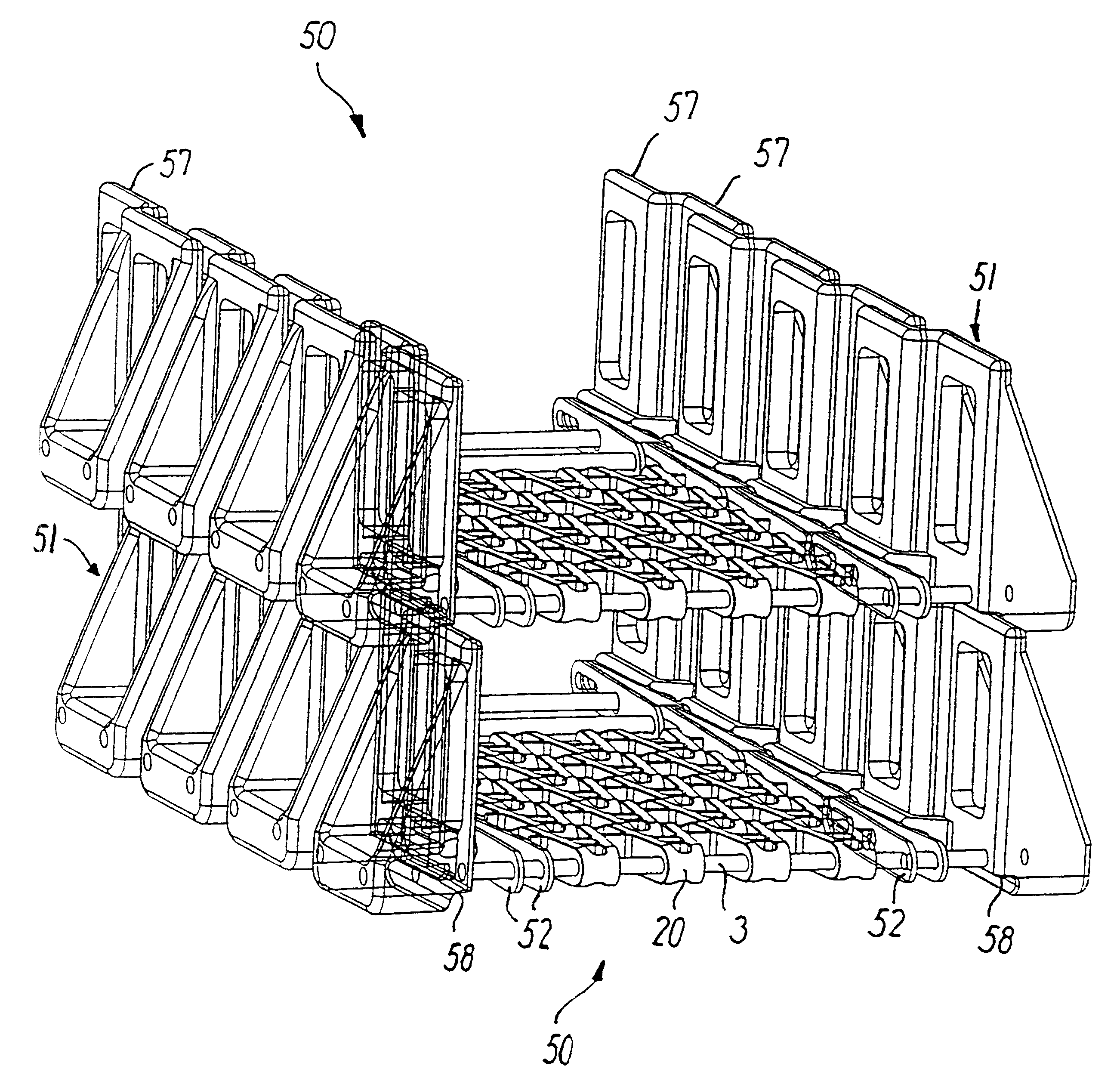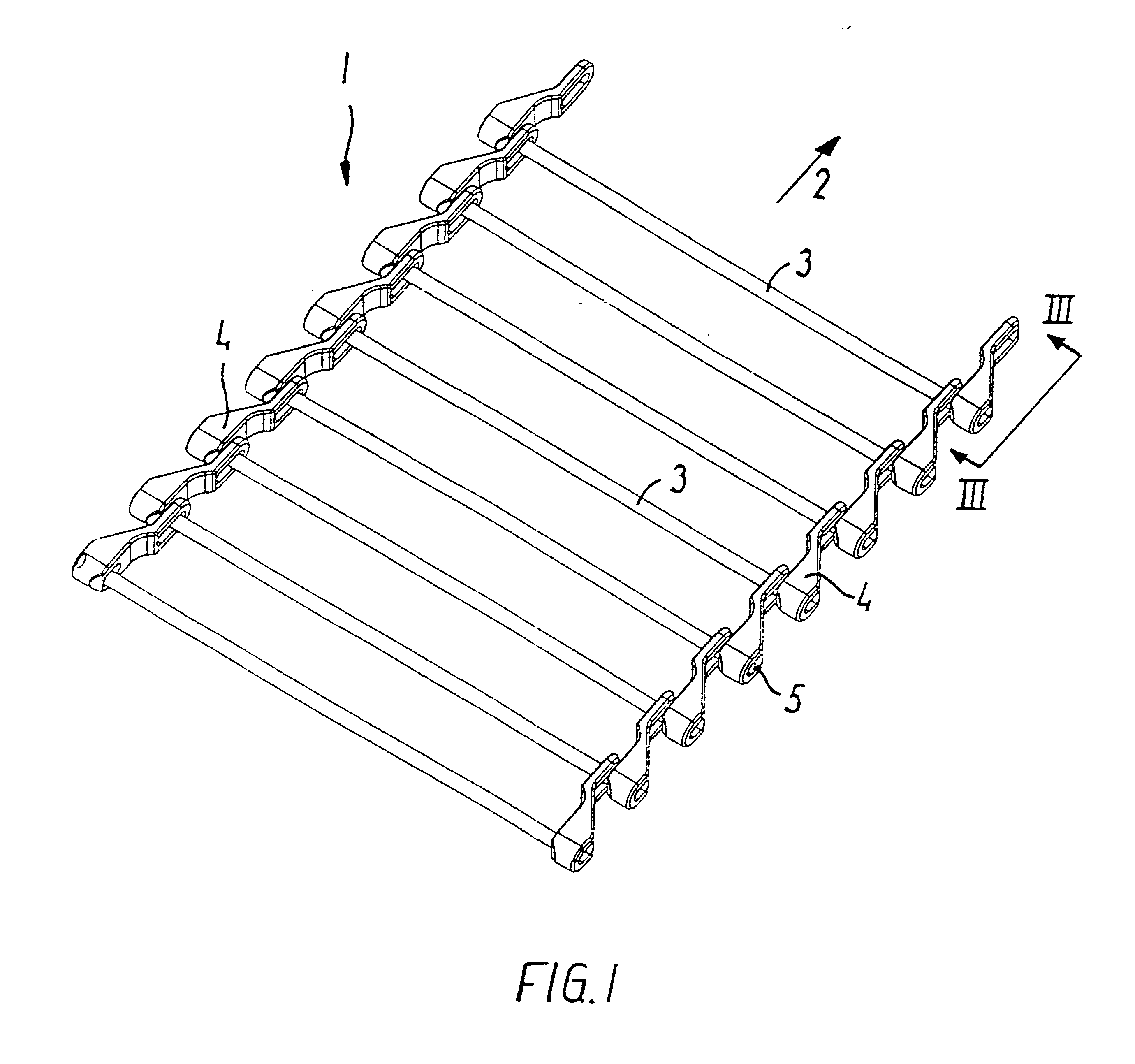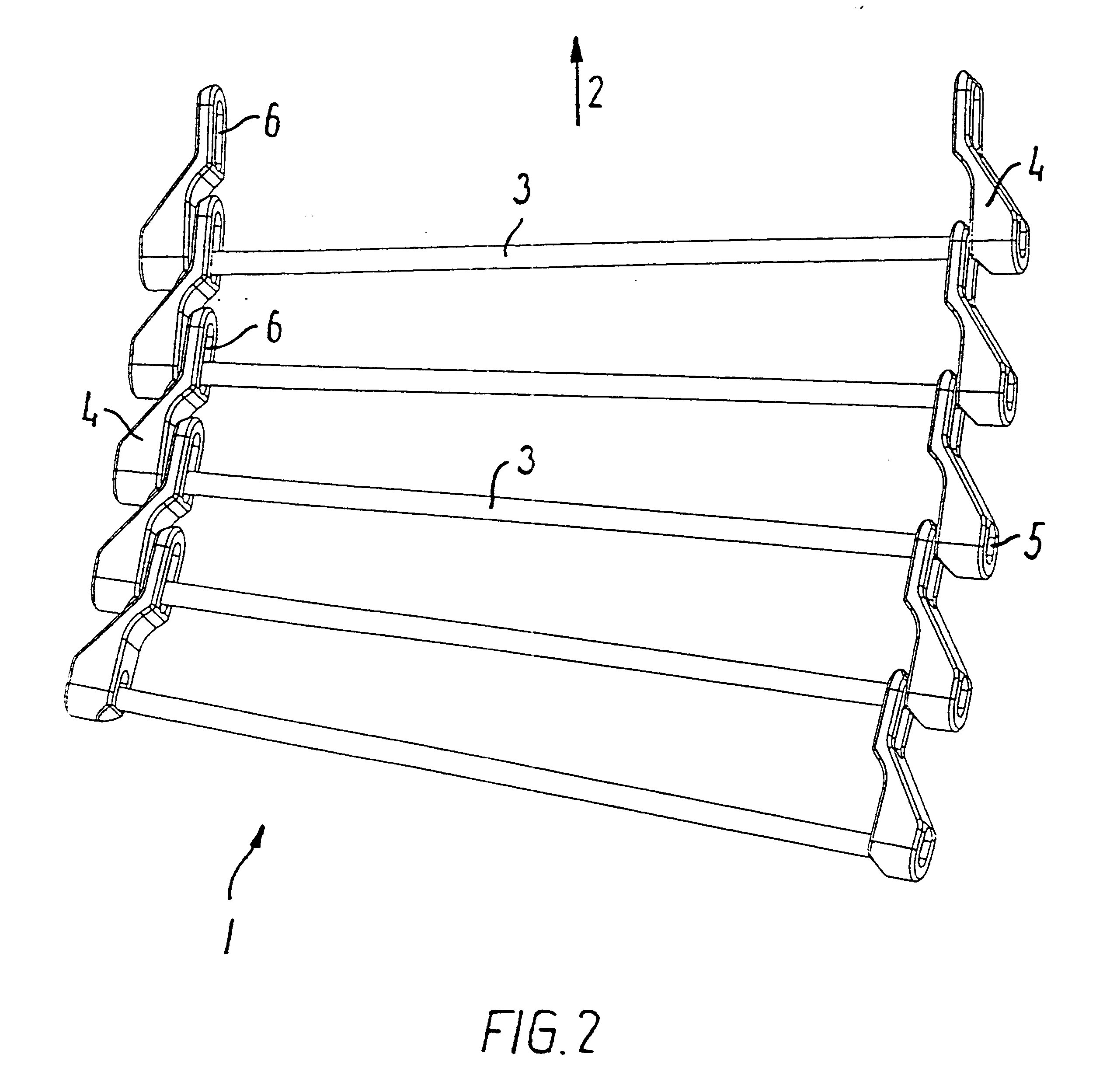Transport band for conveying along a spiral path
a technology of conveyor belts and spiral paths, applied in the direction of conveyor belts, transportation and packaging, rolling carriages, etc., can solve the problems of known conveyor belts that require tools, certain food products have a tendency to freeze fast on the conveyor belts, and food product remains are l
- Summary
- Abstract
- Description
- Claims
- Application Information
AI Technical Summary
Problems solved by technology
Method used
Image
Examples
first embodiment
In FIGS. 19-21 is shown a large outer link 71 moulded in plastic or steel as a one-piece unit. The selection of construction material will depend on the degree of strength it is desired to achieve. The underside has a track 58, the breadth of which corresponds to the total breadth of the top edge 57, in that the link comprises two offset but integrally-formed, vertically-extending areas or wall parts 54, and inclined reinforcement areas 62 integral herewith and down to a part 69 in which the holes 55 are provided for the fastening of the axles 3. The track 58 arises between downwardly-extending parts 59 and 60 in such a manner that the conveyor belt cannot only rest on top of corresponding outer links, but also so that these are guided in the lateral direction. As shown in FIGS. 19-21, the outer link 71 can also comprise a central and horizontally-extending centre rib 53 for engagement with a corresponding recess 63 in an adjacent link. There is hereby formed a railing which faces i...
second embodiment
FIG. 22 shows a large outer link, i.e. where the walls 54 are configured with large openings 64 for the introduction of air or other gases, e.g. for cooling or heating of items on the conveyor belt.
Finally, in FIGS. 23-24 is seen an embodiment where the downwardly-extending part 69, the underside of which is arranged e.g. to rest against a helical stack's support, has a moulded-in steel item 67, e.g. of stainless steel. The steel item 67, e.g. having a shape as shown in the drawing before being moulded-in, can be moulded-in at the same time that the link 71 itself is moulded. It is hereby achieved that the outer links 71 do not get into direct contact with possible supporting elements, which are usually of stainless steel. The contact between the lowermost tier in a helical stack and its support thus takes place solely via the downwardly-facing surfaces 68, so that the plastic links 71 do not make contact with the helical stack's support, which often comprises an endless conveyor ch...
PUM
 Login to View More
Login to View More Abstract
Description
Claims
Application Information
 Login to View More
Login to View More - R&D
- Intellectual Property
- Life Sciences
- Materials
- Tech Scout
- Unparalleled Data Quality
- Higher Quality Content
- 60% Fewer Hallucinations
Browse by: Latest US Patents, China's latest patents, Technical Efficacy Thesaurus, Application Domain, Technology Topic, Popular Technical Reports.
© 2025 PatSnap. All rights reserved.Legal|Privacy policy|Modern Slavery Act Transparency Statement|Sitemap|About US| Contact US: help@patsnap.com



